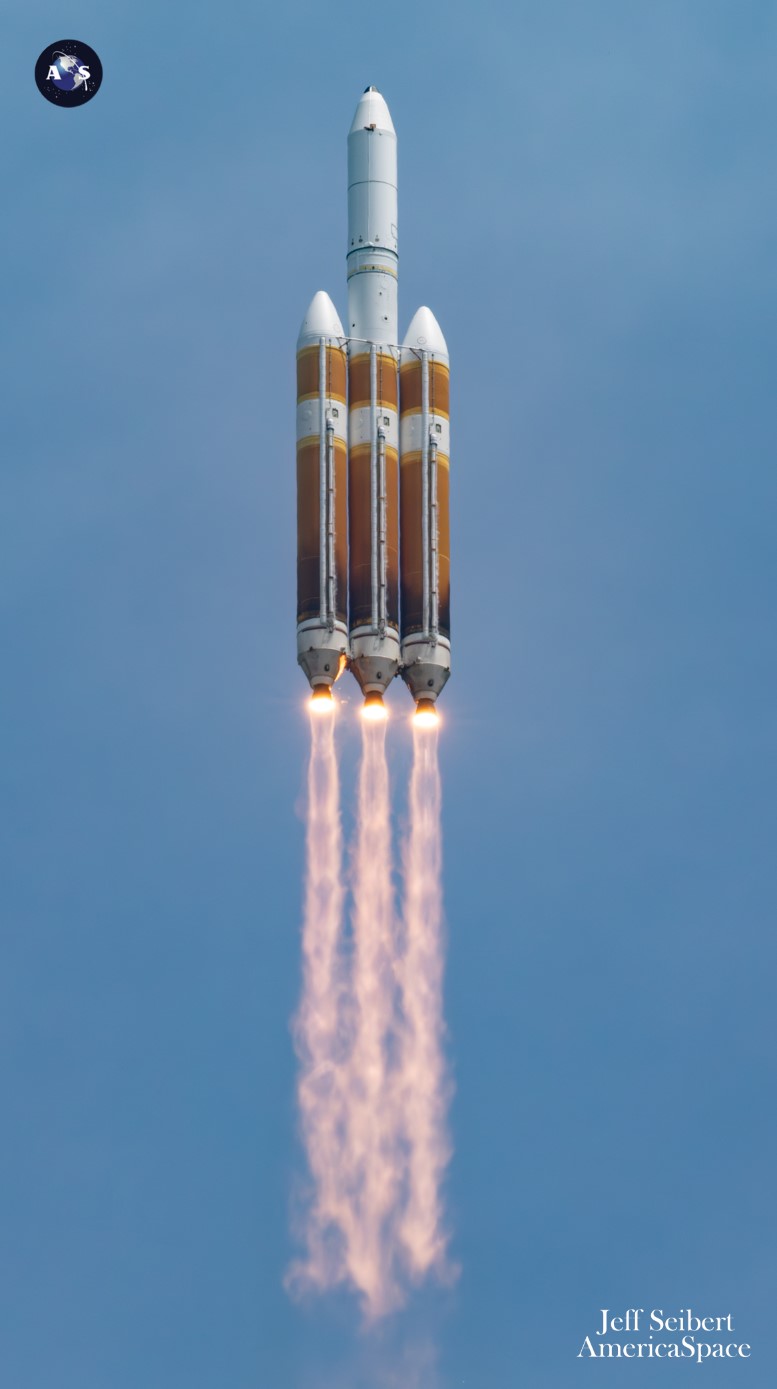
After more than six decades of operational service, 389 flights launched and an impressive 95-percent success rate, the curtain finally fell on the Delta Era at 12:53 p.m. EDT Tuesday as the last triple-barreled Delta IV Heavy—labeled by United Launch Alliance (ULA) as its “Most Metal” of rockets—roared into clear Florida skies, heading into history and the program’s sunset. Pounding Space Launch Complex (SLC)-37B at Cape Canaveral Space Force Station, Fla., with 2.1 million pounds (1 million kilograms) of liftoff thrust, the 235-foot-tall (72-meter) Heavy ferried the National Reconnaissance Office’s highly classified NROL-70 payload on the first leg of its trek up to Geostationary Earth Orbit (GEO).
Today’s mission ends a chain of missions that began with a launch of a modified Thor intercontinental ballistic missile and a second stage bearing the “Delta” nomenclature way back on 13 May 1960. From that first flight, which failed to reach orbit due to a malfunction in the upper stage’s attitude control system, Delta evolved through several iterations, mostly recently the Delta II, retired in September 2018 following the ICESat-2 mission, and the Delta IV Medium, which made its final voyage a year later to deliver the second Block III Global Positioning System (GPS) into orbit, leaving the Delta IV Heavy to fly five final times for the National Reconnaissance Office (NRO) between December 2020 and today.
The Delta’s earliest missions included Echo-1, the first passive communications satellite, launched in August 1960, and Telstar-1, which furnished the first live-broadcasted television pictures between the United States and Europe in July 1962. Deltas also lofted the world’s first geosynchronous-orbiting communications satellite, Syncom-2, in July 1963, as well as Intelsat-1—the famous “Early Bird”—which delivered near-instantaneous transcontinental television and telephone broadcasts for the first time after its April 1965 launch.
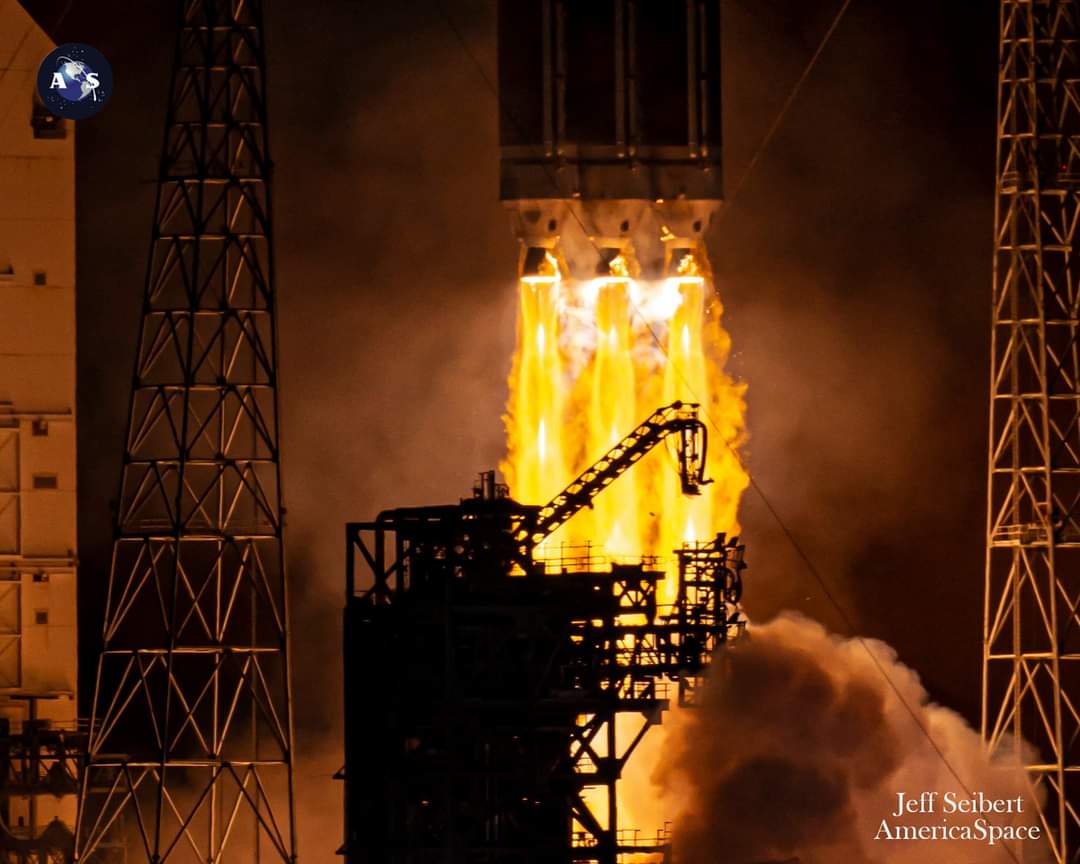
In addition to communications, Deltas delivered missions ranging from meteorology to solar science, atmospheric and magnetospheric physics and space research to Earth resources and life sciences. Key payloads included Solar Max in February 1980—a Sun-observing spacecraft later repaired by shuttle astronauts in April 1984—plus the Infrared Astronomical Satellite (IRAS) in January 1983 and the Near-Earth Asteroid Rendezvous (NEAR) mission, launched in February 1996 to visit, orbit and explore asteroid 433 Eros.
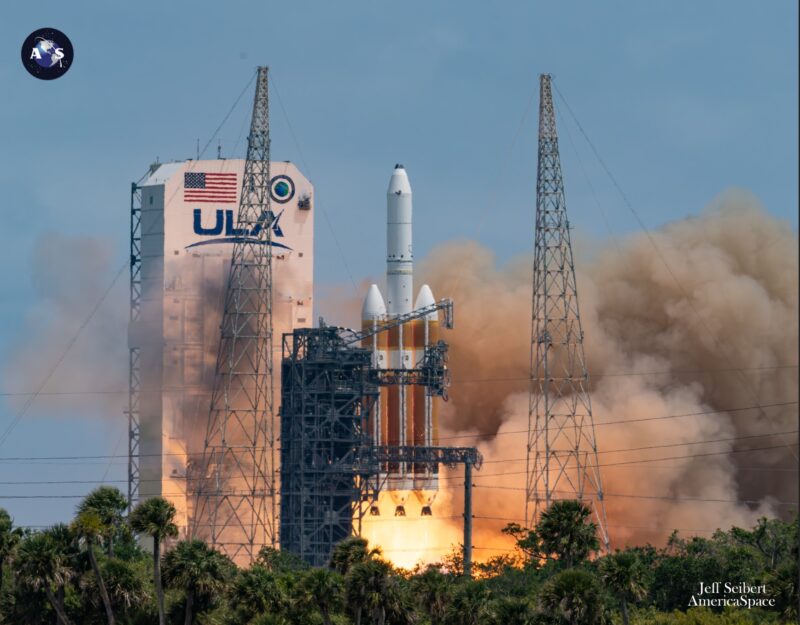
Members of the Delta family also kicked off multiple voyages to the Red Planet: Mars Pathfinder with its historic Sojourner rover in December 1996, the Spirit and Opportunity rovers in the summer of 2003 and the Phoenix lander in August 2007. Others included the Spitzer space telescope—the last of NASA’s four-spacecraft fleet of “Great Observatories”— and the MErcury Surface, Space ENvironment, GEochemistry and Ranging (MESSENGER) voyage to explore the Sun’s nearest planet.
The Delta IV Heavy—which was until February 2018 the world’s most powerful in-service launch vehicle—is a relatively recent addition to this decades-old fleet of rockets. The triple-barreled behemoth entered service in December 2004 and with NROL-70 logged its 16th and last launch, delivering 12 NRO payloads, the final Defense Support Program (DSP) early-warning satellite in November 2007, the Exploration Flight Test (EFT-1) of NASA’s Orion spacecraft in December 2014 and the Parker Solar Probe in August 2018.
Primary payload for today’s flight was NROL-70, the fifth and last mission under a $1.18 billion Launch Operations Support (LOPS) contract modification awarded by the Space and Missile Systems Center (SMC), in partnership with the NRO, to ULA in September 2019. The contract followed on the heels of an earlier Launch Vehicle Production Services (LVPS) contract awarded in October 2018 for a group of NRO payloads dedicated to national security: the many-times-delayed NROL-44, which finally flew in December 2020, NROL-82, launched in April 2021, NROL-91 in September 2022—the final Delta IV Heavy launch out of Vandenberg Space Force Base, Calif.—and most recently last June’s NROL-68 from the Space Coast.
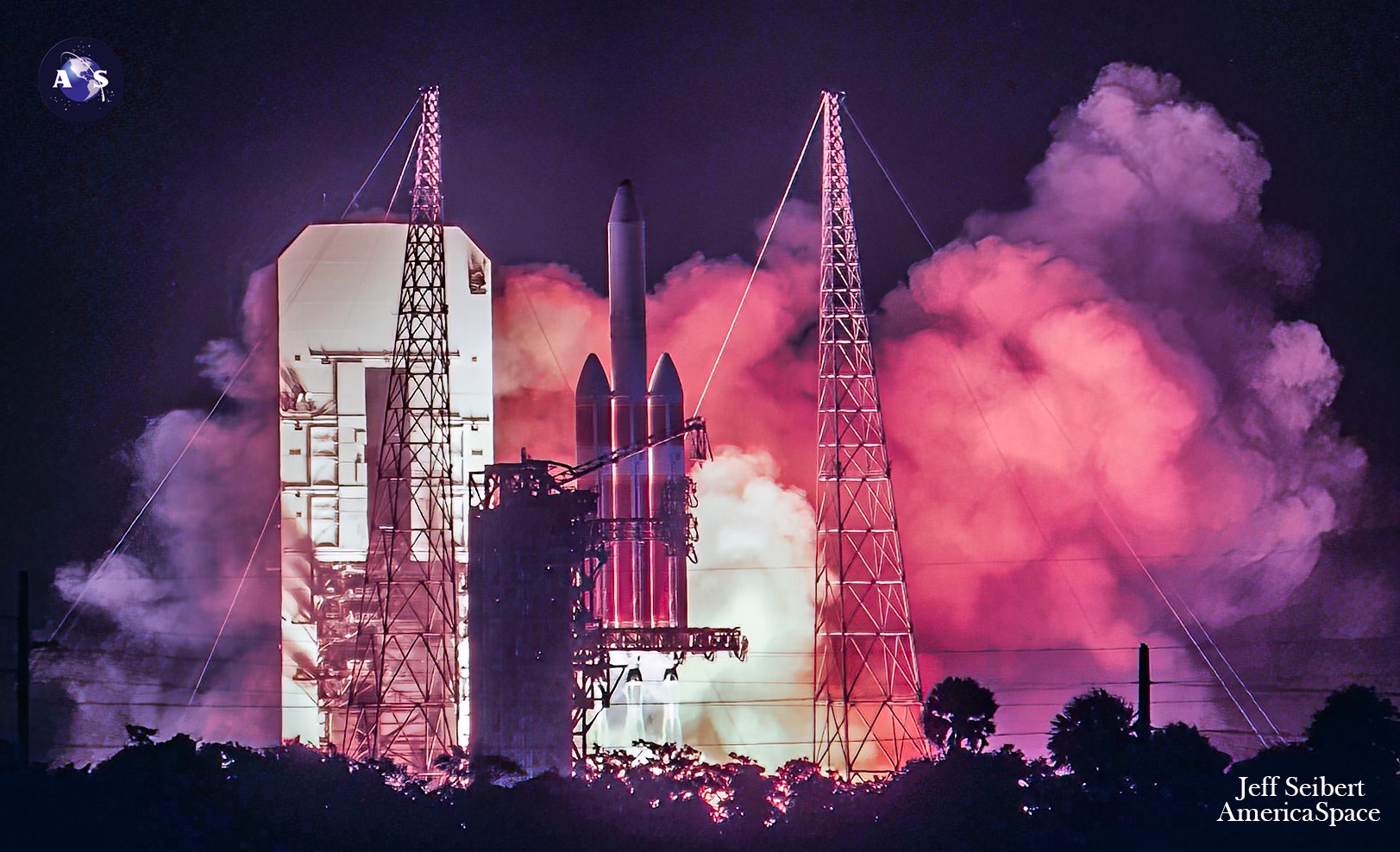
Delta IV Heavy hardware for NROL-70 began arriving at the Cape in May of last year, when the 134-foot-long (40.8-meter) center, port and starboard Common Booster Cores (CBCs) were delivered from ULA’s Decatur, Ala., manufacturing facility to Port Canaveral, aboard the R/S RocketShip vessel. Over the next several months, the center core was mated with the port and starboard CBCs, followed by the 45-foot-long (13.7-meter) Delta Cryogenic Second Stage (DCSS), inside the Horizontal Integration Facility (HIF). Also completed in the HIF, the Launch Mate Unit (LMU) was fastened to the three CBCs to serve as a structural base when it stands atop SLC-37B’s launch table.
Last 19 December, the 170-foot-long (51.8-meter) integrated CBC/DCSS stack was transferred horizontally via a 36-wheeled, diesel-powered transporter from the HIF to the pad. It was raised vertical the next day as part of the Launch Vehicle On Stand (LVOS) milestone and on 26 February the 65-foot-long (19.8-meter) “trisector” Payload Fairing (PLF) which encapsulates the NROL-70 spacecraft was added, topping-out the stack at 235 feet (72 meters) high.
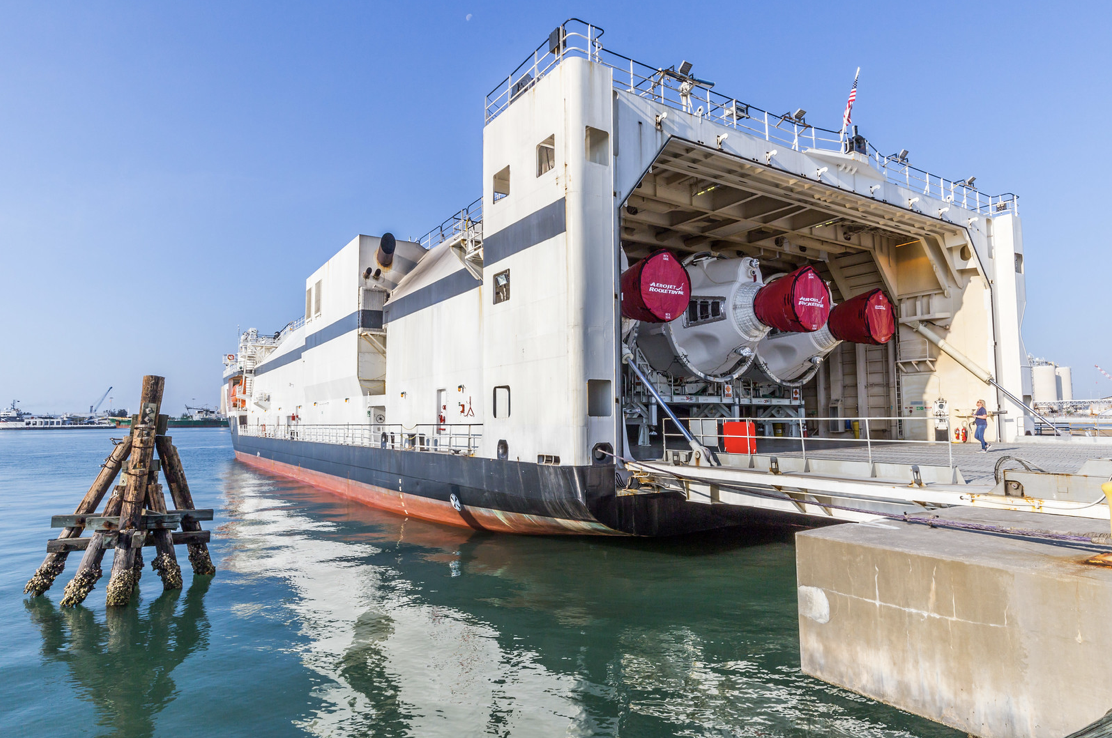
Teams initially targeted launch during a “window” that opened at 1:40 p.m. EDT on 28 March. However, the T-0 was postponed firstly until 2:05 p.m. EDT, then 2:45 p.m. EDT, before being scrubbed only seconds after emerging from the final built-in hold at T-4 minutes. ULA announced that it was aiming for a backup attempt as soon as 1:37 p.m. EDT on 29 March, but as circumstances transpired the resolution of the technical malady which kept the Heavy ground-bound proved thornier to resolve.
“The launch of a United Launch Alliance Delta IV Heavy carrying the NROL-70 mission for the National Reconnaissance Office was scrubbed today due to an issue with a liquid pump failure on the gaseous nitrogen pipeline which provides pneumatic pressure to the launch vehicle systems,” ULA revealed in the hours after the scrub. “The team continues to troubleshoot the pipeline and more time is needed to instil confidence in the system. We will continue to work with our customer to confirm our next launch attempt and a new data will be provided upon resolution.”
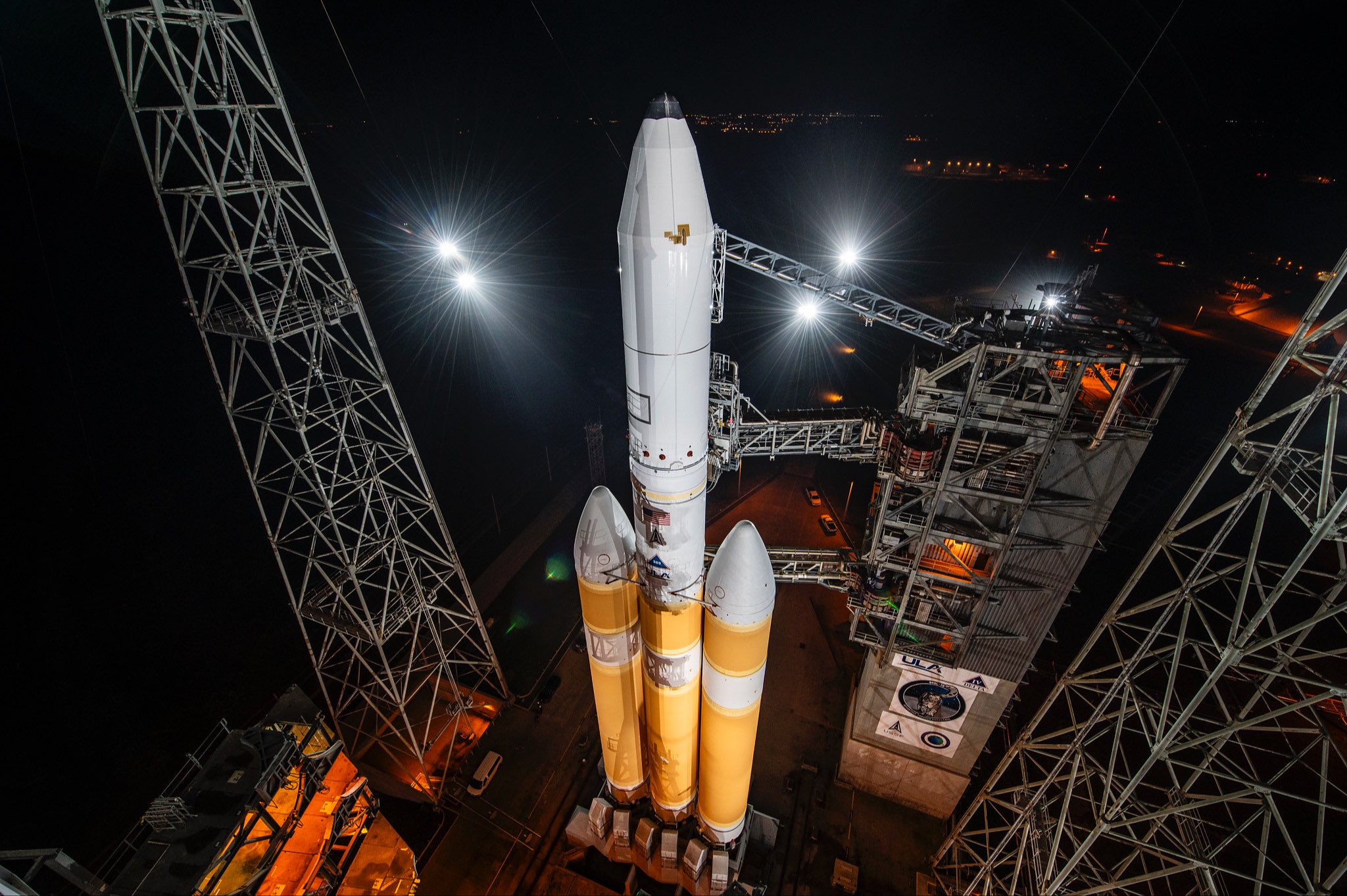
Finally, last Tuesday ULA announced that, “pending Range approval”, it was targeting a revised T-0 at 12:53 p.m. EDT on 9 April. Weather conditions were predicted to be 90-percent favorable, deteriorating to 80 percent in the event of a slippage to Wednesday and only 40 percent for a delay until Thursday.
“An area of high pressure that has brought mild weather the last few days will continue to move slowly eastward,” noted the 45th Weather Squadron at Patrick Space Force Base in its L-1 update. “By Tuesday, winds will begin to pick up as the pressure gradient tightens between that high, off Florida’s east coast, and a developing low over Texas.
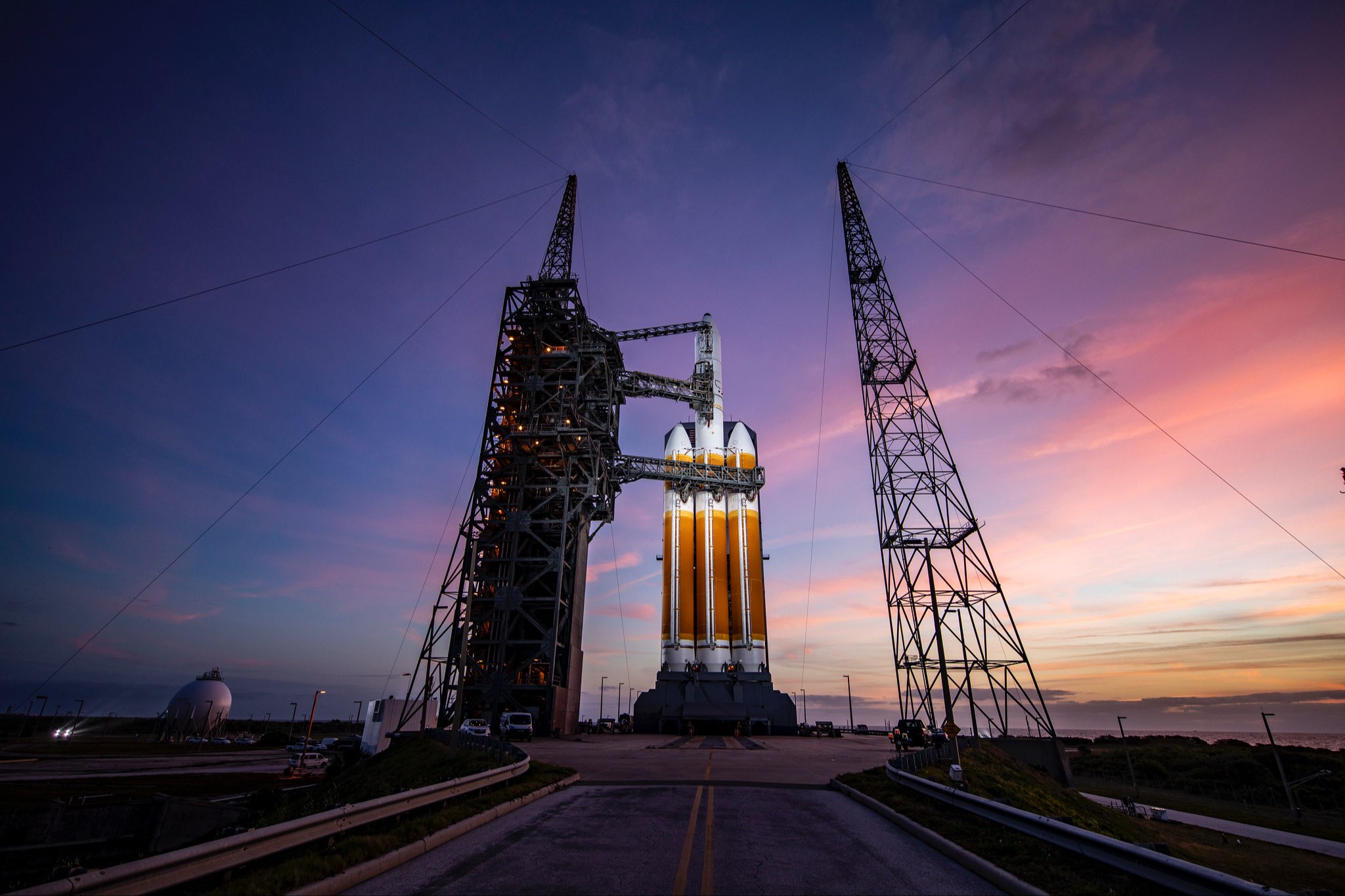
“That setup should bring favorable conditions for launch Tuesday and Wednesday,” it added. “By Thursday, the low is expected to be moving into Florida, bringing strong winds, increased cloudiness and a chance for showers and thunderstorms to the Space Coast.”
With a possible violation of the Cumulus Cloud Rule deemed Tuesday’s only potential showstopper, the NROL-70 countdown began crisply at 4:23 a.m. EDT, at T-8 hours, with the powering-up of the rocket, testing of its guidance system and flight control checkouts ahead of fueling. The 330-foot-tall (100-meter) Mobile Service Tower (MST) began its quarter-mile-per-hour (0.4 km/h) “rollback” at 6:15 a.m. EDT to expose the Delta IV Heavy and reached its “hard-down” point, approximately a football field’s distance away from the rocket by 6:57 a.m. EDT.
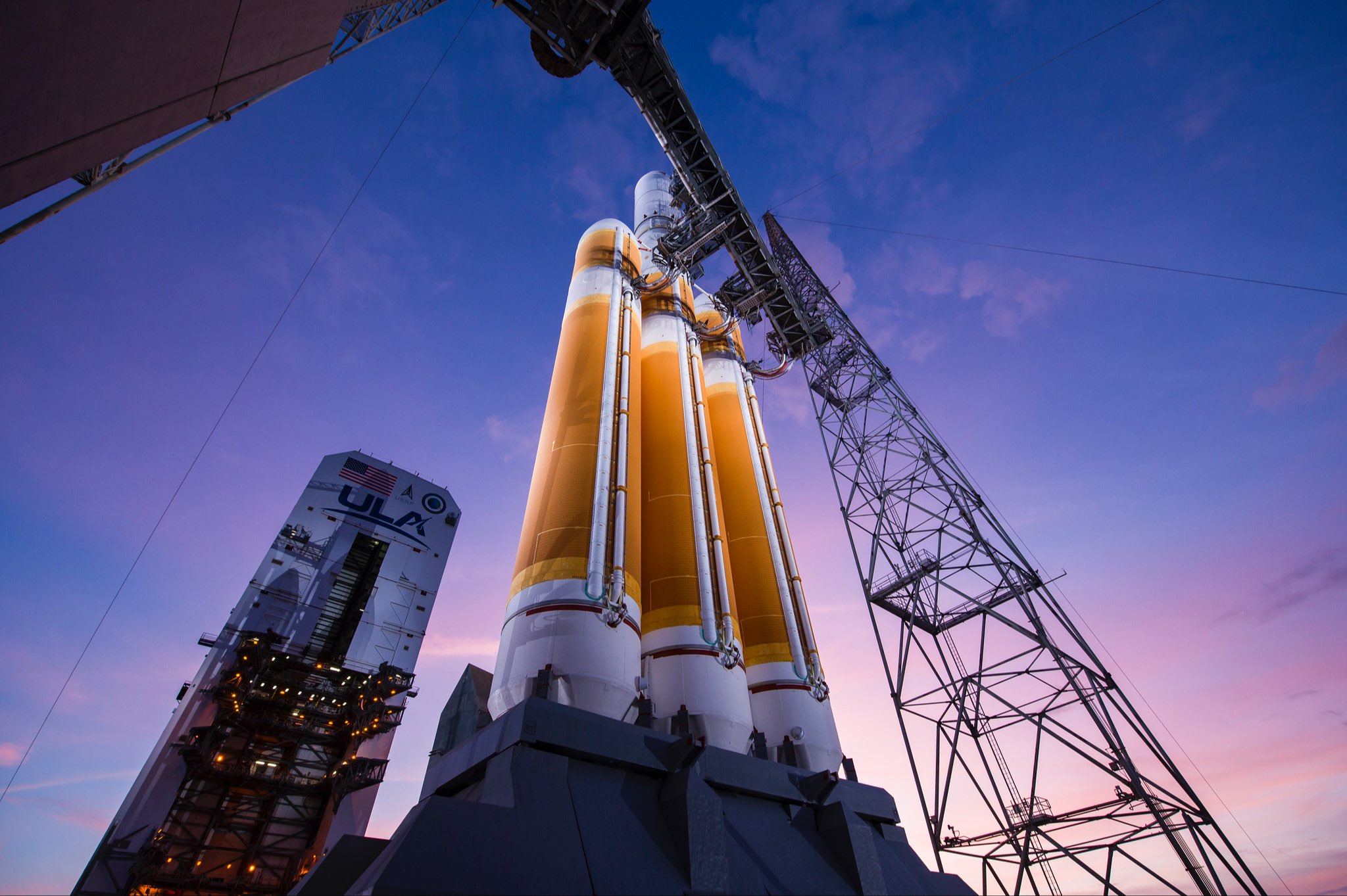
Led by Launch Conductor Scott Barney and Launch Director Tom Heter III, authorization was granted to load the rocket with 330,000 gallons (1.2 million liters) of liquid hydrogen, chilled to -252 degrees Celsius (-423 degrees Fahrenheit) and 120,000 gallons (450,000 liters) of liquid oxygen, cooled to -183 degrees Celsius (-298 degrees Fahrenheit). As the countdown resumed from its first built-in hold, teams pressurized the liquid hydrogen storage tanks and charged high-pressure helium bottles on the first and second stages as cryogenic fueling commenced.
As the morning progressed, the pace of tanking picked up as propellant flow transitioned from a slow-fill to a fast-fill regime. Shortly afterwards, teams started loading 6,000 gallons (27,000 liters) of liquid oxygen and 10,000 gallons (45,500 liters) of liquid hydrogen into the DCSS upper stage. Weather remained 90-percent-favorable, with some high clouds, good visilibility, southeasterly winds averaging 14-22 knots and temperatures close to 26 degrees Celsius (79 degrees Fahrenheit).
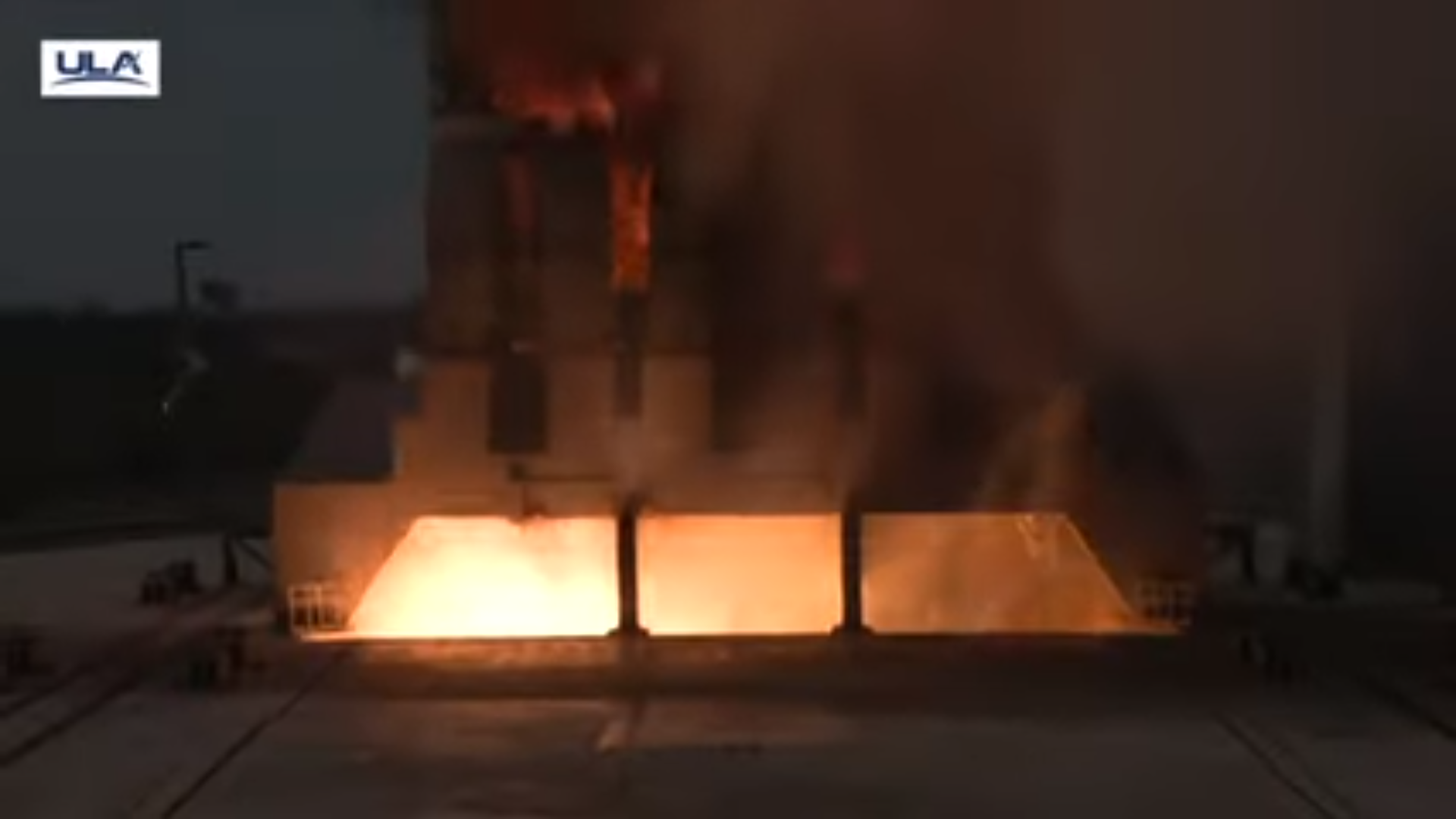
Mr. Barney led a poll of his two-dozen-strong launch team, which concluded with a string of “Go” calls across the board. The final permission to proceed with launch came from NRO Mission Director Col. Eric Zarybnisky. The clock resumed counting from the countdown’s second and final pre-planned hold at T-4 minutes at 12:49 p.m. EDT.
This officially kicked off the “Terminal Count”, during which time the Delta IV Heavy’s Flight Termination System (FTS) was placed onto internal power and armed. Propellant tanks attained requisite flight levels and pressures and the three RS-68A engines—one at the base of each CBC—were verified as “Ready” to support the launch.
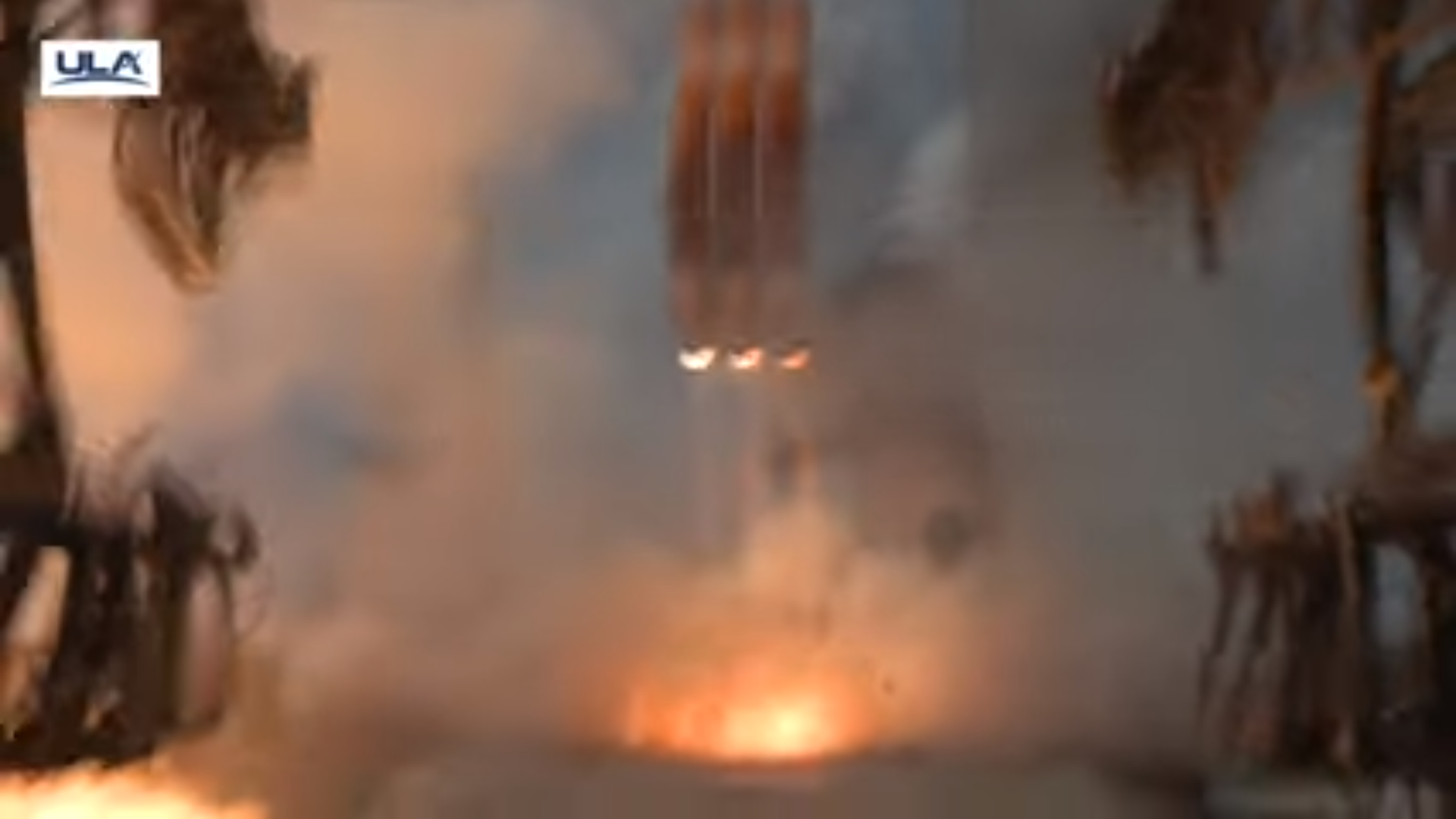
At T-15 seconds, the sparkler-like Radial Outward Firing Igniters (ROFIs) came alive to burn off excess gases dumped through the engine nozzles, prior to ignition. And at staggered intervals, first the starboard CBC roared to life, then the port and center cores, before the final Delta IV Heavy sprang from SLC-37B under 2.1 million pounds (1 million kilograms).
“We have ignition,” exulted Launch Commentator Andrea Lehnhoff, growing excitement evident in her voice. “Two…one…and liftoff of the final United Launch Alliance Delta IV Heavy rocket, carrying NROL-70 for the National Reconnaissance Office and closing Delta’s six-decade legacy of excellence in space!”
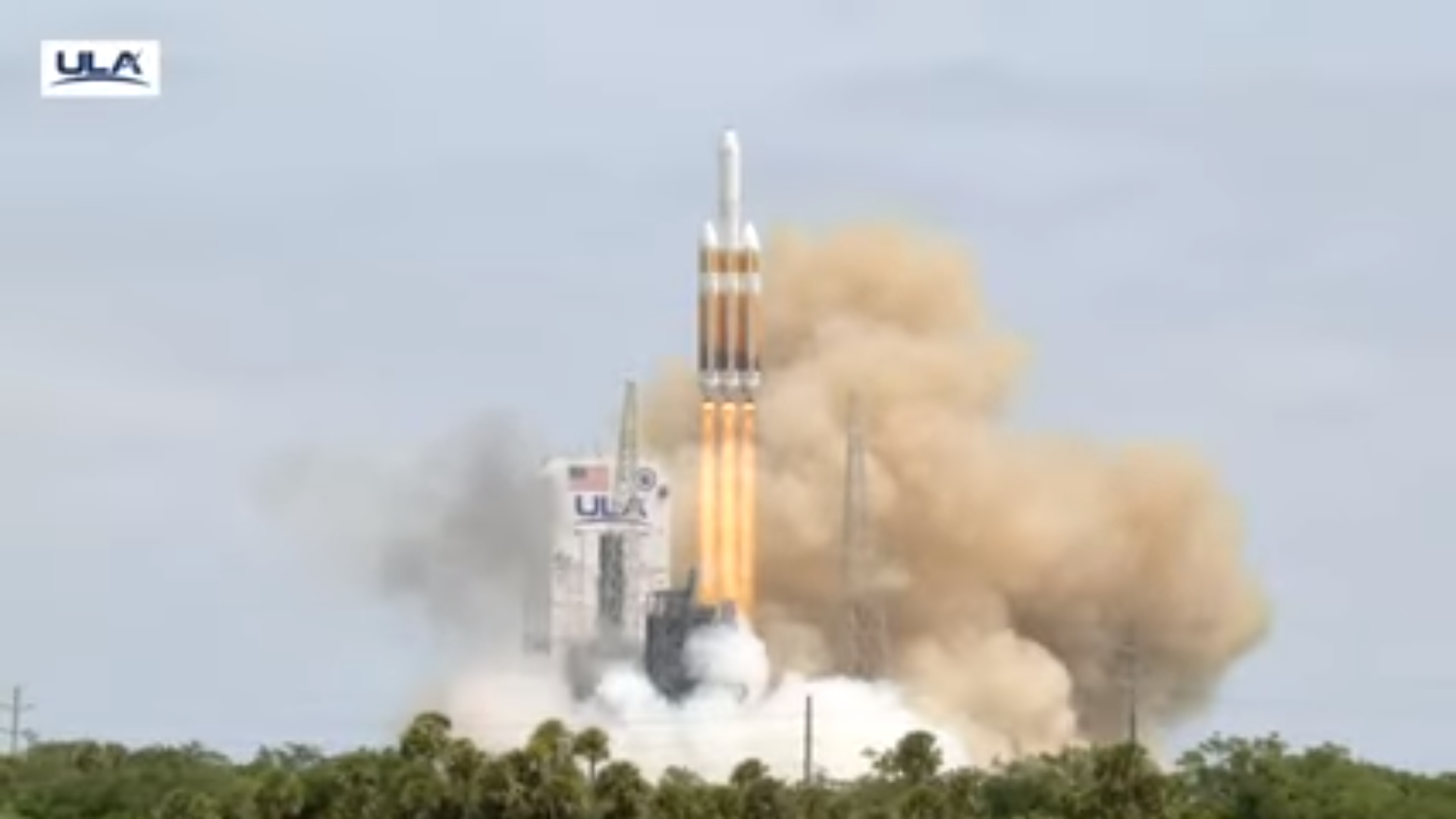
Launches of Heavies are always disconcerting to the uninitiated in their opening seconds, as the vast quantities of hydrogen being dumped through the engines to condition them—ahead of opening the liquid oxygen valves and commanding the ignition sequence—generates a colossal fireball which appears to set the rocket’s orange-colored insulation alight as it departs the pad.
Seconds after liftoff, the triple-barreled rocket began a computer-commanded pitch, roll and yaw program maneuver to establish itself onto the proper azimuth to insert NROL-70 into its highly optimized orbit. The vehicle surpassed Mach 1, eclipsing the speed of sound, about 80 seconds into ascent.
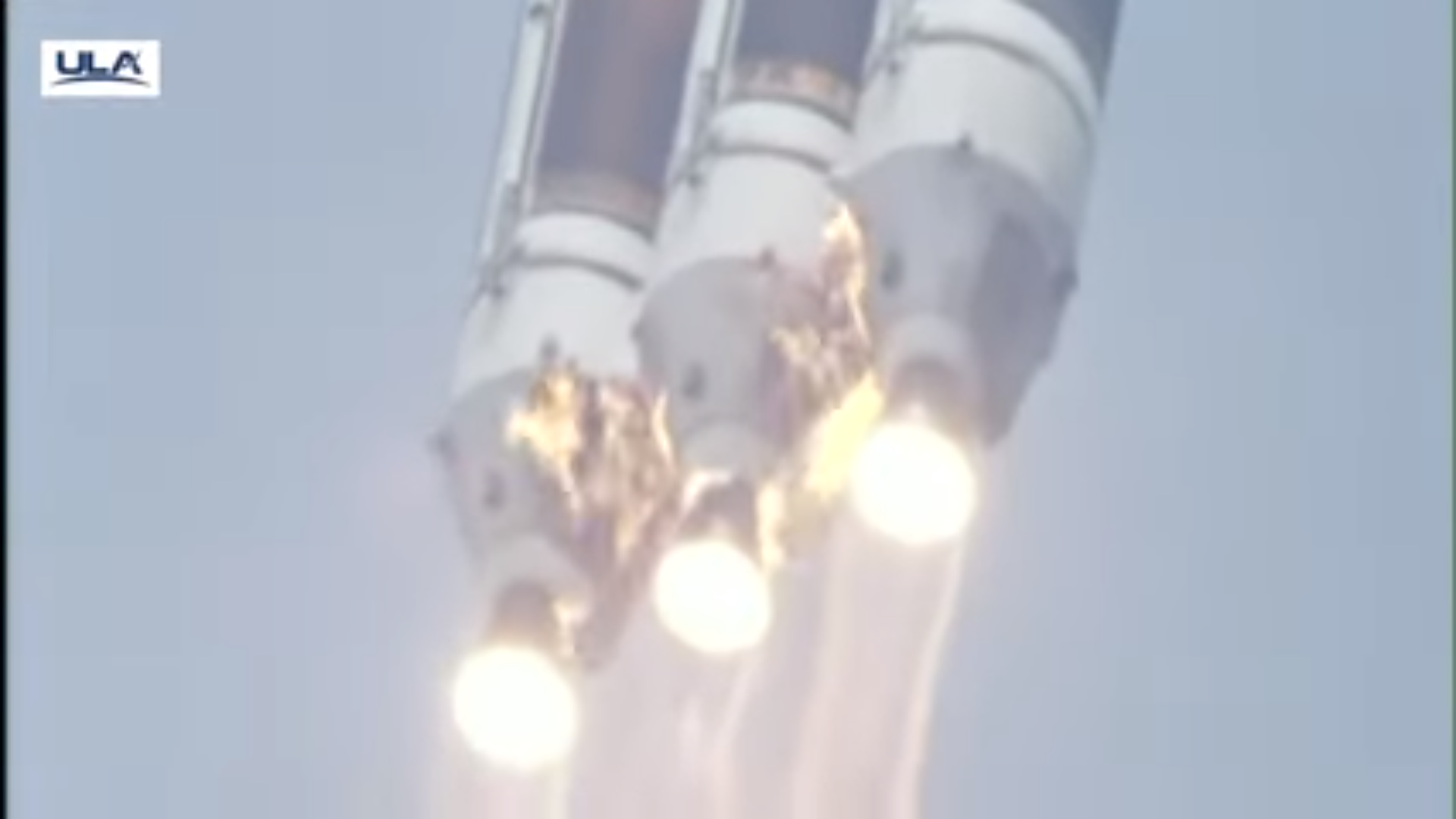
Four minutes and 15 seconds after liftoff, their propellant depleted, the port and starboard CBCs were discarded, as the center core ramped up to full power. Its single RS-68A engine continued to burn for a further 90 seconds, before shutting down at 5.5 minutes into the flight. The core was jettisoned shortly afterwards.
This left the 45-foot-long (13.7-meter) Delta Cryogenic Second Stage (DCSS) and its single RL10-B-2 engine, which came alive with a thrust of 24,750 pounds (11,250 kilograms) to begin the process of delivering NROL-70 to its targeted operational orbit. During the burn, payload fairing was discarded at T+6 minutes and 37 seconds, exposing the payload to the harsh environment of space for the first time.
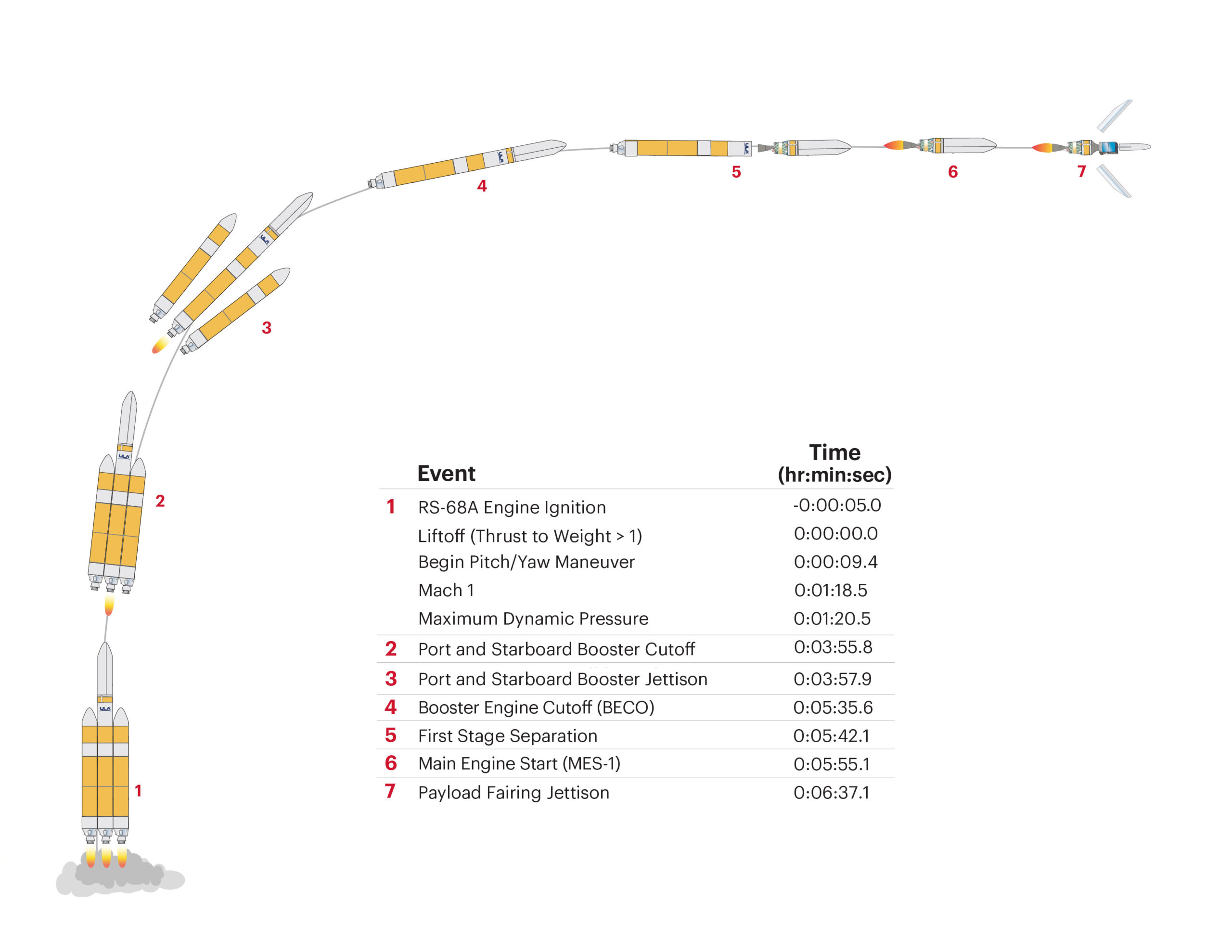
As is customary on classified missions, the precise length of the RL10-B-2 “burn” was not announced and ULA ended its live broadcast shortly after the payload fairing was jettisoned. By this stage, the vehicle weighed less than six percent of its liftoff mass and the Delta Era, in a literal blaze of glory, vanished into the sunset and into history.




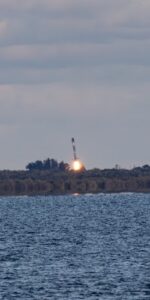
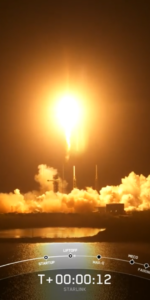
2 Comments
Leave a Reply2 Pings & Trackbacks
Pingback:After Delta IV Heavy’s Swansong, Cape Roars to Accelerated Falcon 9 Launch Cadence - SPACERFIT
Pingback:After Delta IV Heavy’s Swansong, Cape Roars to Accelerated Falcon 9 Launch Cadence - AmericaSpace